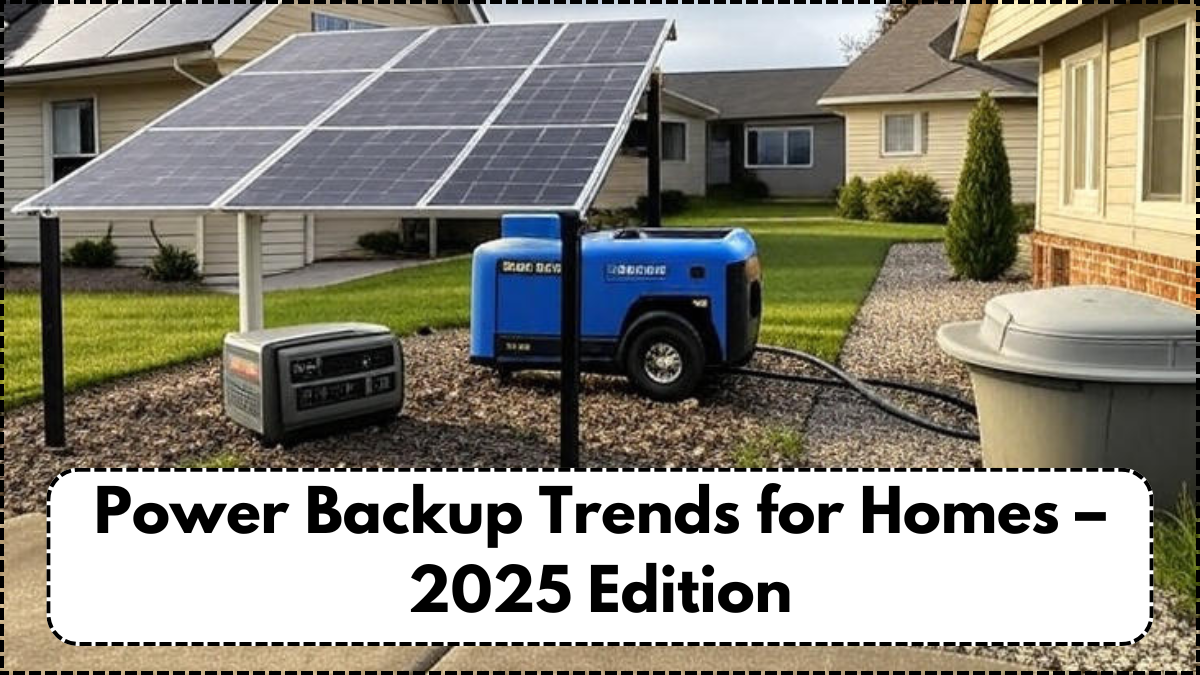With the growing reliance on electronics and the need for uninterrupted living, Power Backup Trends 2025 are reshaping how homeowners think about energy. Frequent outages, rising electricity costs, and an increased demand for eco-friendly solutions are pushing innovation forward. From hybrid inverters to advanced batteries, the latest home energy systems are designed to keep homes running smoothly while being efficient and sustainable.
In 2025, power backup isn’t just a safety net—it’s part of a broader home energy strategy. Families and businesses alike are looking for systems that integrate solar, smart monitoring, and long-lasting batteries, making energy management a seamless part of daily life.

Why Power Backup Matters More in 2025
The need for reliable power has grown as homes depend on everything from smart devices to work-from-home setups. This makes understanding Power Backup Trends 2025 critical for modern living.
Reasons why these trends are shaping the market:
-
More households want uninterrupted power for remote work and study.
-
Smart appliances and IoT devices need constant electricity.
-
Environmental awareness is driving interest in sustainable home energy solutions.
-
Extreme weather events are causing more power interruptions.
These factors mean backup systems have moved from being a “nice-to-have” to an essential part of household infrastructure.
Key Power Backup Trends for 2025
The Power Backup Trends 2025 reflect a major shift toward smarter, cleaner, and more efficient solutions for home energy.
| Trend | What It Means | Impact on Homeowners |
|---|---|---|
| Lithium-Ion Batteries | Faster charging, longer lifespan | Reduced maintenance and better reliability |
| Hybrid Inverter Systems | Combine solar, grid, and battery | Maximize energy savings and flexibility |
| Smart Energy Monitoring | Track usage via apps and dashboards | Optimize consumption and costs |
| Solar-Powered Backups | Eco-friendly and renewable | Lower electricity bills over time |
| Portable Backup Units | Compact and mobile solutions | Ideal for apartments and rentals |
These innovations are redefining how power backup fits into the home energy mix for 2025.
How Homeowners Are Adapting to New Power Solutions
Adopting these Power Backup Trends 2025 isn’t just about buying new equipment—it’s about rethinking home energy management.
Homeowners are making changes such as:
-
Investing in hybrid systems that support solar panels and traditional backup.
-
Choosing lithium-ion over lead-acid batteries for efficiency and space-saving.
-
Using smart apps to track energy use and schedule charging during off-peak hours.
-
Installing portable units in smaller homes and apartments where large systems aren’t practical.
These changes show that energy resilience is becoming as important as energy savings.
Conclusion
The Power Backup Trends 2025 point to a future where backup power is smarter, greener, and fully integrated into home energy systems. With hybrid setups, lithium batteries, and solar integration, today’s solutions offer more than just emergency power—they deliver convenience, sustainability, and control. For homeowners in 2025, the right power backup choice is about creating a home that’s ready for anything.
FAQs
What are the top Power Backup Trends 2025?
They include lithium batteries, hybrid inverters, solar backups, and smart energy monitoring.
Why is home energy backup more important now?
Homes rely on constant electricity for work, study, and connected devices, making backup essential.
Are lithium-ion batteries better than older types?
Yes—they last longer, charge faster, and fit better with modern home energy systems.
Can solar energy be used for power backup?
Absolutely—solar-powered backups are one of the fastest-growing Power Backup Trends 2025.
Are there affordable backup solutions for small homes?
Yes, portable units and compact systems make it easy to have backup power even in smaller spaces.
Click here to know more